Rumble Pie #8
Recovering Civilization One Roof at a Time
IN HONOUR OF Toronto City Council Bylaw PG25.3, we present the third blog in a series about green roofs. Meet Malcolm Wells: octogenarian eco-architect, artist, author, and time-traveller. Yes, you heard me correctly: time-traveller! How else could one possibly account for his beautiful and brilliant designs? They are not of this era, they are evidence of a large leap forward in human evolution. If people immediately and permanently cease all destructive activity, then perhaps in seventy-five or a hundred years, the earth would return to itself and reclaim the rooftops of our man-made structures. The genius of Malcolm Wells is that he has the super-human ability to see through the misty sands of time and envision entropy a hundred years hence.
IF DULL DEVELOPERS want to transplant tufts of grass and call them green roofs, and if Hundertwasser would weave thick, shaggy manes onto the tops of buildings, Malcolm Wells would turn them into sasquatch structures, unrecognizable to our industrialized eyes. The only possible contemporary comparisons are to acknowledged wonders of the world, Peru's Machu Picchu, or Cambodia's Temple of the Unknown. But though he once taught environmental design at Harvard, don't expect institutional architecture to acknowledge his greatness and shower him with accolades today. Up until now, only maybe three or four thousand earth-sheltered houses have been built in the USA; the godfather of underground architecture is an unsung eco-hero.

I HAD THE PLEASURE of visiting Malcolm Wells at his home in Massachusetts in the winter of 2005. Unlike almost all other egomaniacal architects, he is lovingly humble. Incredibly articulate, I will let Mac speak for himself, tell you in his own words about his half-century-long mission for a more gentle architecture: "Every building on Cape Cod -- residential, commercial, religious -- looks like this, or like some modified version of it. There are tens of thousands of them, and they are very popular. They show us, at a glance, just how far the human animal has come in its 10,000-year quest for an appropriate means of shelter. To build in that way requires that the native New England forest be stripped away and replaced, after construction is complete, by a toxic green lawn and plants native to some other region."

"AS AN ARCHITECT, I'm ashamed of what my fellow professionals and I have done during the last fifty years. Russell Baker was right when he asked, 'Why do Americans hate lawyers so much when architects are doing far more than lawyers can to make the country unlivable?' Pay us a fee and we'll do anything. What do we do? Look around you: America's best land: destroyed, nature: crushed under buildings and parking lots, resources: squandered, energy: wasted. The saddest part is that we know better and still do nothing about it. We actually know how to build without destroying land."
"REGISTERED TO PRACTICE architecture in 1953, I spent the first eleven years basking in my own greatness. I got design awards, I got my name in the paper, and I made more money than perhaps a young man should make. Churches and factories and schools and offices of my design were built on nature woodlands and fields of wildflowers. Then I woke up: I wasn't a creator. I was a destroyer: my buildings, with their parking lots, walks, plazas, and toxic green lawns had wiped out everything that had been alive there... In 1964, after ten years spent spreading corporate asphalt on America in the name of architecture, I woke up one day to the fact that the earth's surface was made for living plants, not industrial plants. I've been an underground architect ever since."

"WE LIVE IN AN ERA of glitzy buildings and trophy houses: big, ugly, show-off monsters that stand -- or I should say stomp -- on land stripped bare by the construction work and replanted with toxic green lawns. If the buildings could talk they would be speechless with embarrassment, but most of us see nothing wrong with them, and would, given the opportunity, build others like them, for few of us realize that there's a gentler way to build. It's called underground... By letting our structure hog all the sunlight wherever we go, we stamp out much of the natural riches of our land. Weather is not kind to building materials. They need to be protected by a blanket of earth. Otherwise, ice cracks the freeways, water rusts bridge structures, floods rage because water cannot soak into impervious ground."
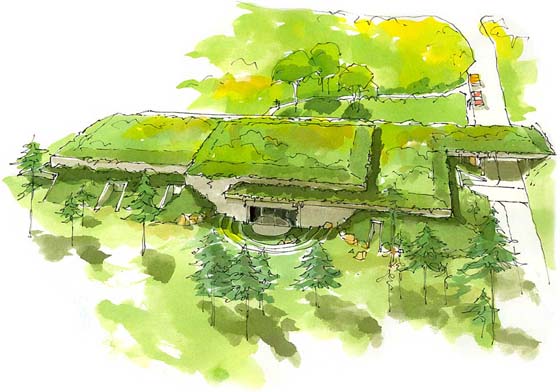
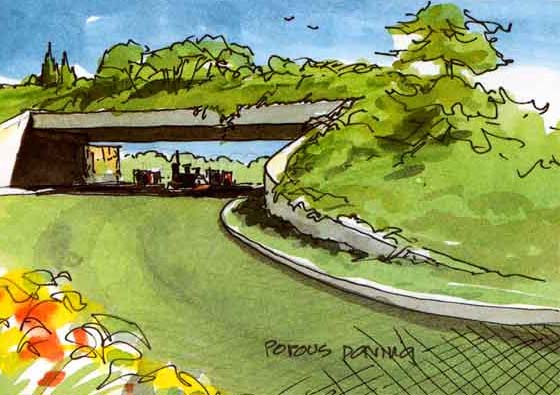
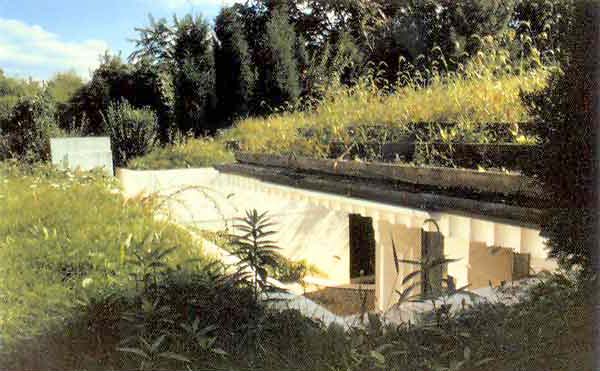
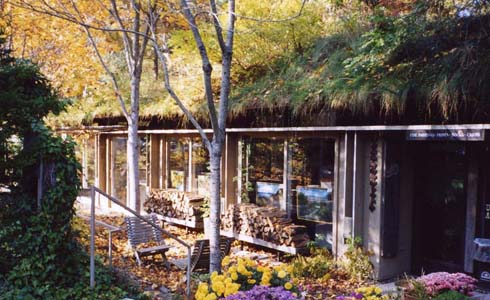
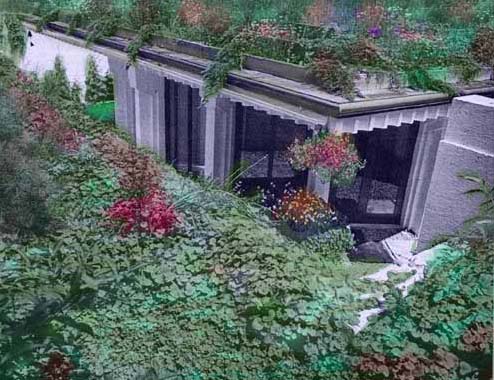
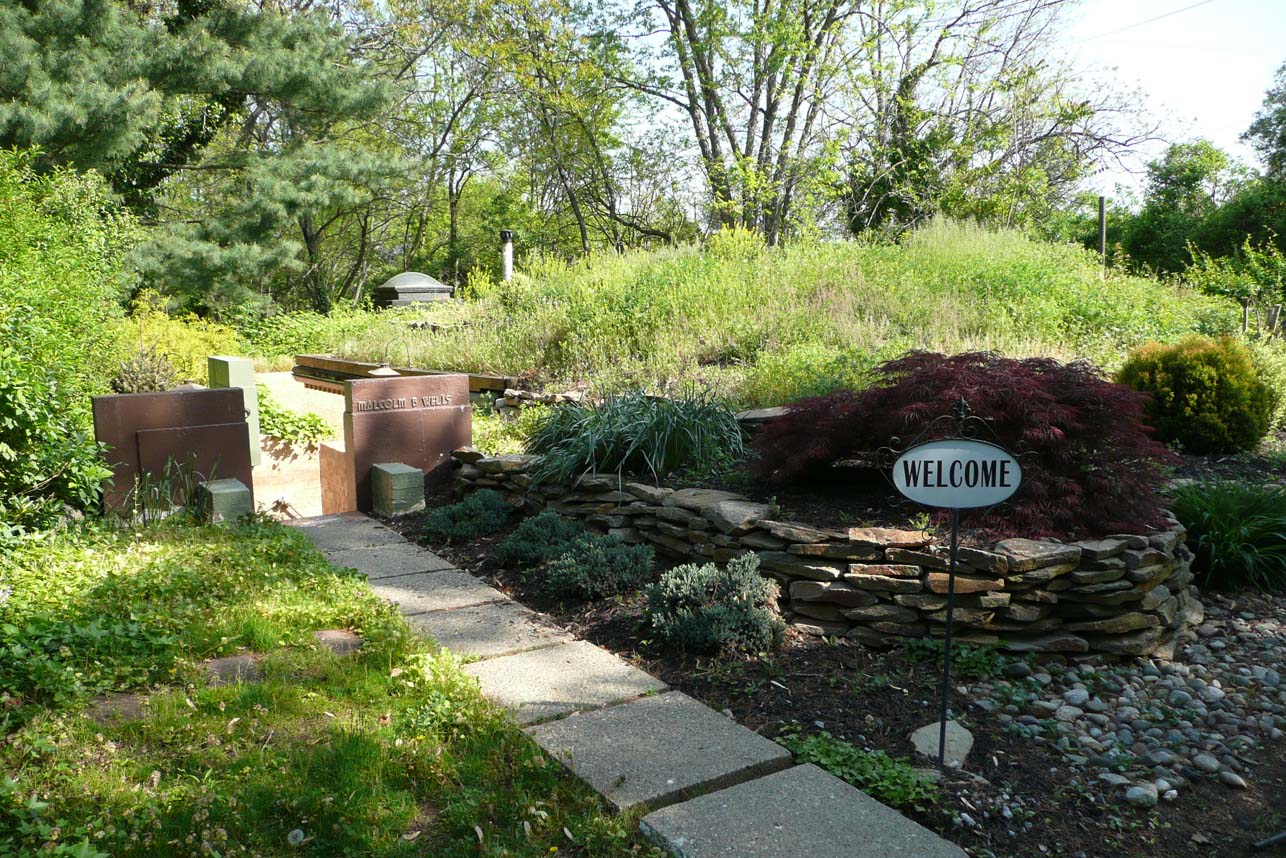
"A BUILDING SHOULD consume its own waste, maintain itself, match nature's pace, provide wildlife habitat, moderate climate and weather and be beautiful. That's a series of pass/fail evaluation criteria... And it was quickly apparent that unlike all conventional buildings these actually healed the wounds cause by their construction, allowing native plants and animals to move back onto them. Blankets of living land not only made sites healthy, they offered all kinds of other benefits: greatly reduced energy use; bright, dry interiors; fire resistance, silence, ease of maintenance, and permanence. Not only that, they were living proof that there is a simple and appropriate alternative to America's wasteful and destructive building practices."
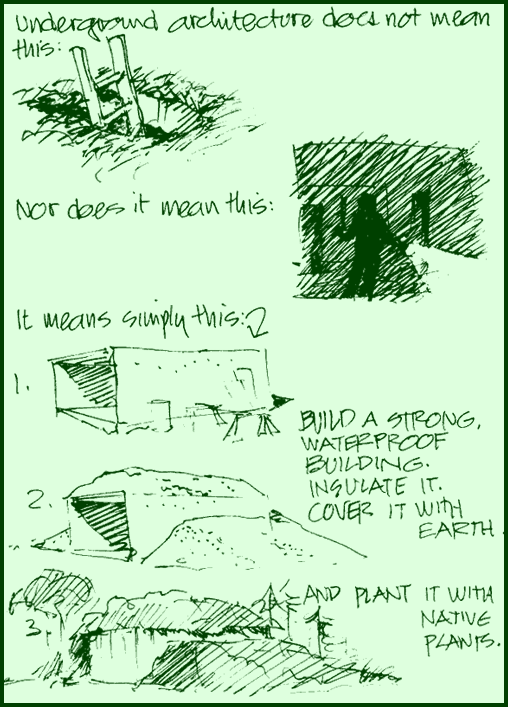
|

